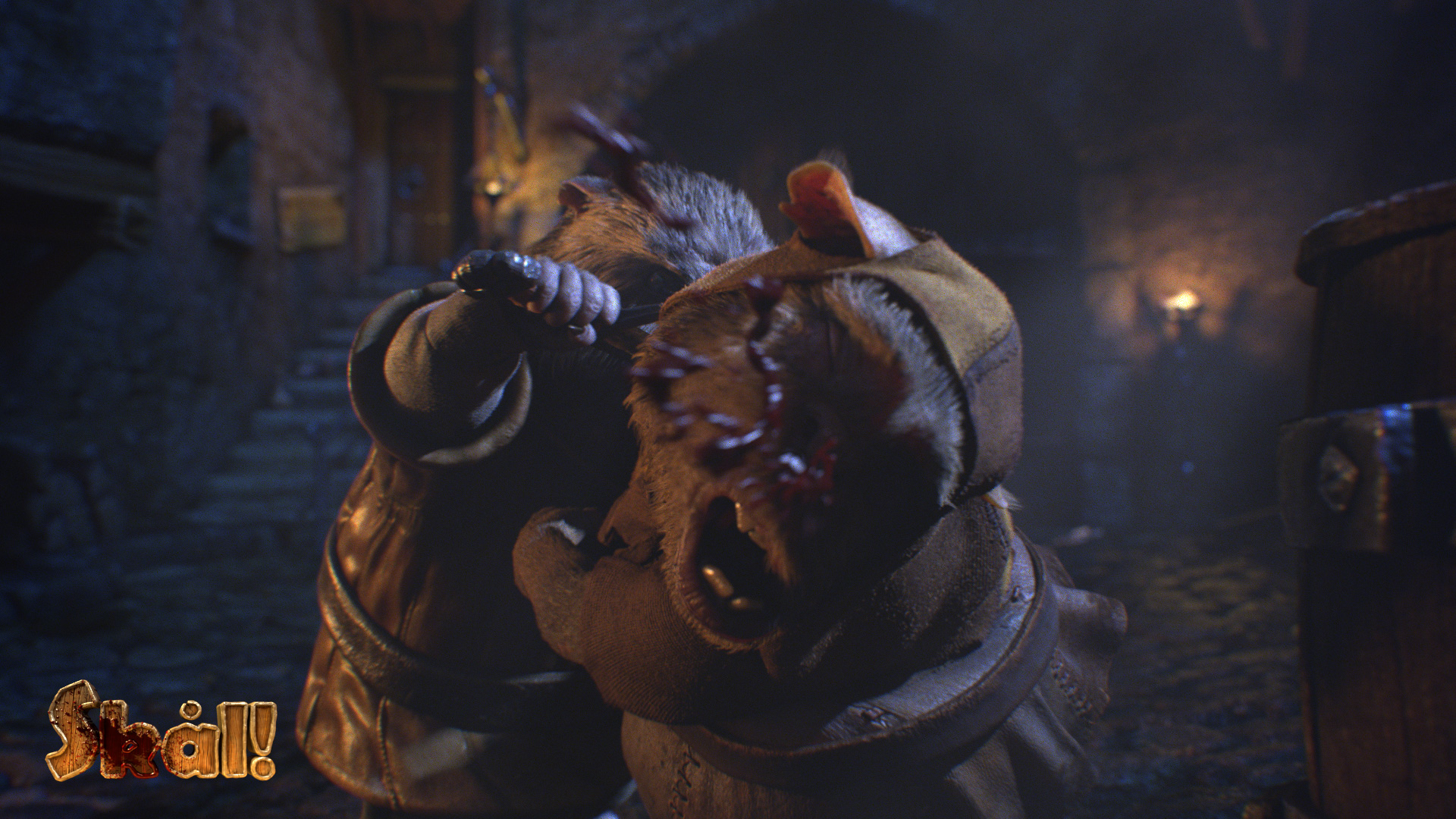Skål!, the Swedish word for “Cheers,” is the title of an animated short film about a pair of boozing hamsters who have a score to settle. The film is the creation of a talented group of students from Germany’s Institute of Animation at Filmakademie Baden-Württemberg.
Marco Hakenjos, Timm Wagener, Manuel Seifert, Johannes Franz, and Christian "Chan" Zehetmeier are studying in the Animation / Effects Producing and Technical Directing programs, and Skål! is their graduate project.
Houdini was chosen for this project to help them combine hand-built sets with CG characters - essentially creating the look of a semi-realistic miniature world. The digital set was generated using photogrammetry, and with Houdini they accomplished much of the film’s VFX work, cloth simulation, fur generation, shading, rendering, and lighting.
Setting Up The Pipeline
To create a pipeline for their project, the team built a collection of tools and libraries integrated with Houdini’s Digital Asset technology. This approach gave them short turnaround times, especially as they entered the latter stages of production. Working with Houdini Digital Assets played a key role in helping them reduce their workload and keep repetitive tasks to an absolute minimum.
Character FX | Cloth And Fur

The styling of the hamster fur was created using Houdini’s Fur Tools.
Character animation was imported into Houdini using the Alembic file format where the Cloth asset was applied. This asset was designed to automatically generate a cloth simulation for selected areas of the geometry with just a single click of a button. If changes were required, the asset provided them with editable nodes for every step of their pipeline. In some cases, their Cloth asset also helped them with post-animation fixes.
The styling of the hamster fur was created using Houdini’s Fur Tools in combination with texture maps that were painted in Mudbox in order to provide fur attributes such as length, density, clumping and frizz.
Each character’s coat of fur consisted of multiple fur systems, with each one behaving appropriately to the body parts they were designed for. When in place, each character’s fur systems were then packed into an asset.
Simulating the fur helped prevent it from intersecting with clothing as well as to giving it nice movement when the hamsters were in motion. The simulated guides were then cached out and loaded into the fur asset when lighting the scene.
Lighting And Rendering
The group made a strategic decision to build almost all of their own shaders for the purpose of advancing their learning. The GGX Plug-In from Houdini’s odForce community handled most of the reflective contributions and blended with other BRDF’s when needed. Their handmade shaders were then packaged into shading assets that were applied to shots automatically by reading metadata from Alembic caches.
Additionally, they developed an AOV system as a part of their pipeline that enabled a straightforward and standardized AOV output with a central control. This was integrated into each one of their shaders in order to provide them with a consistent interface for compositing.
Lighting was implemented by dividing the various setups into categories, allowing them to maintain a particular order to their setups and keep light linking clutter to an absolute minimum. As they worked, they could frequently delete and copy entire light setups from shot to shot. Just copy and render without any broken linking connections whatsoever.
For rendering, the Raytrace Engine with Compute Lighting nodes was the approach taken. Opting to use separate Mantra nodes for each render pass provided them with a simpler, more effective means of managing complexity. It also gave the team the ability to simply copy their render nodes from one shot to another and have it setup in a matter of seconds.
VFX
Many other traditional Houdini-generated VFX elements can be found throughout the course of the film. The team of students utilized Pyro FX to add flames to candles and torches, beer and blood were created with FLIP Fluids, fire embers and smoke were created using particles, and dynamics were used to destroy wooden barrels.

Project
The overall intention for this project was for the team to learn new tricks and expand on their skill set. For this reason, each member of the group picked tasks to which they had no previous experience. They are now ready to take their skills and talent out into the real world while their creation Skål! is entered into upcoming film festivals.
More About The Filmakademie
Credits
Marco HakenjosTimm WagenerManuel SeifertJohannes FranzChristian Zehetmeier (Chan)Hanna BinswangerTobias BurkardtZygimantas Kucas
Animation / Effects Producing is a two-year postgraduate course for production with a specialization on animation and effects projects, offered by the Institute of Animation at Filmakademie Baden-Württemberg.
Technical Directing (TD) is a two-year postgraduate course; graduates qualify as Technical Directors for animation and VFX projects. Technical Directors are responsible for the technical supervision of film projects, meaning that they engage the technical aspects of the production. By joining the production team, TD students at the Institute of Animation learn to solve problems and handle pipelines. Among others, they develop plug-ins and applications, define workflows and production requirements, and engage in current research projects.
COMMENTS
Strob 8 years, 3 months ago |
That's amazing. The fur, lighting, rendering is just perfect!
Please log in to leave a comment.